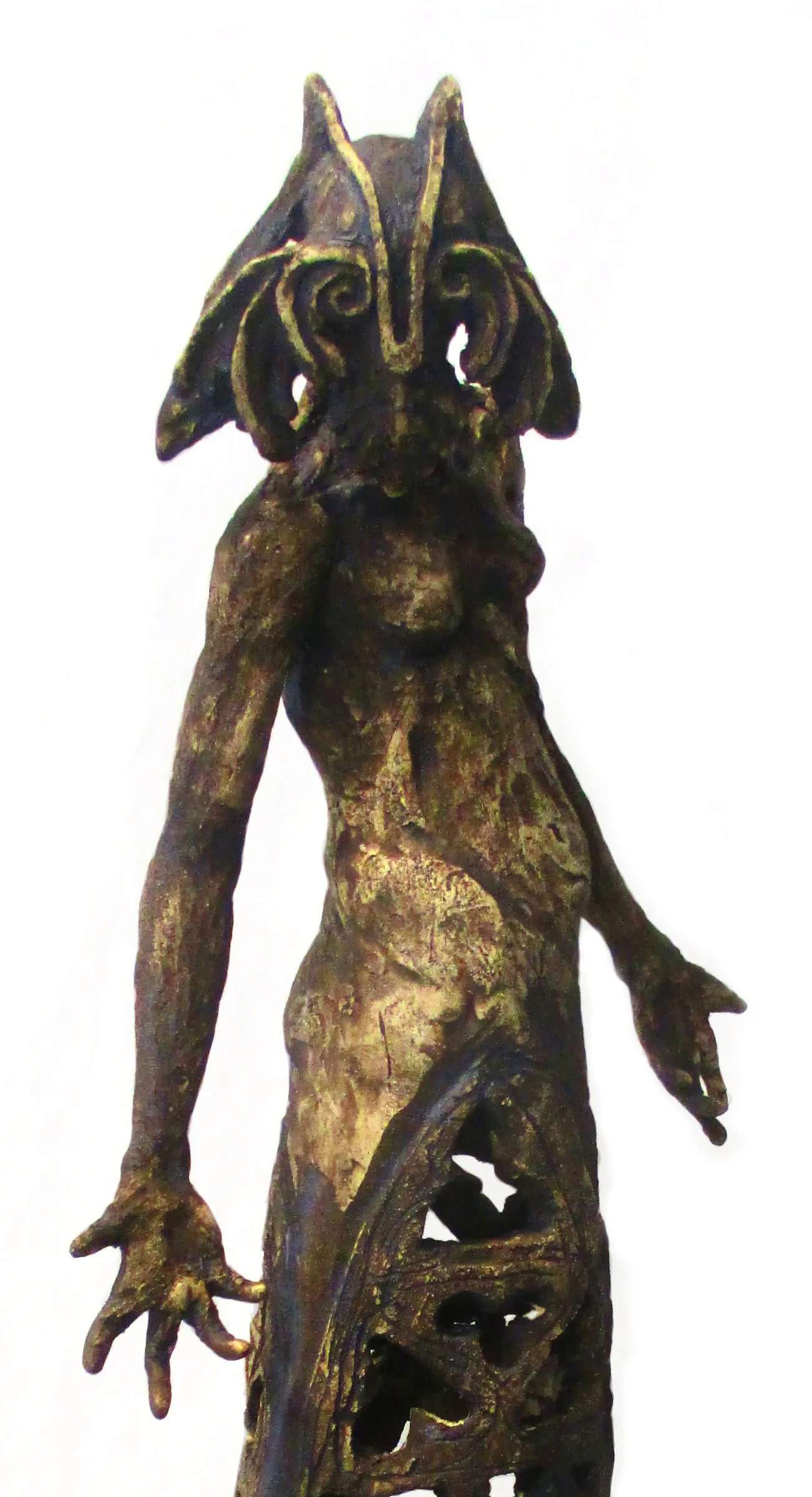Hubris
Hubris
The Story Behind the Sculpture
If you ever had to read a Greek play in high school, you may have heard the term hubris.
Merriam-Webster defines it as “exaggerated pride or self-confidence”, but — as far as I remember from my literature teacher — it’s used in the context of Greek plays to define a character who reaches too far beyond their human means and tries to outwit or outdo Fate and/or the gods. Such characters are overconfident, and that flaw sews the seeds of their ruin.
I didn’t know I was going to name this piece Hubris when I first started, but this sculpture did begin with a desire to give a physical form to raw confidence, to the sense of rising up, of swelling with power.
Though the sculpture stood only about 2 ½ feet tall, I wanted it to feel tall, imposing, and utterly unafraid — a kind of “come at me bro” attitude.
While I had a strong sense of direction in starting the piece, I struggled with perfectionism as I pushed to finish it.
Faced with a deadline that would determine whether the sculpture would make it into a show, I found myself forced to leave rough cuts and jagged lines where I wanted to spend hours carving and polishing.
Yet the ultimate calamity — and reason why this piece is called Hubris — occurred as I loaded the sculpture into the kiln with the help of the studio technician.
Holding it precariously by the torso, I turned, and the base of the sculpture cracked against the door of the front-loading kiln.
Blocky shards hit the floor as the two of us stared at the mauled sculpture in my hands. But we carried on, fired all the pieces, and with the help of some epoxy, Hubris stood once again, albeit with a different kind of base.
As I thought about the process of this sculpture, it became clear that Hubris was the perfect name for this piece.
Filled with lofty aspirations, I butted up against forces that highlighted the limits of my own control: a deadline, and the immutable strength of steel and gravity against a very delicate medium.
And yet, the ruins of Hubris’ broken base had given the sculpture a dynamism it didn’t have before, when it was whole and more controlled — the calamity that at first I thought had ruined the piece had ended up completing it in a way I’d never anticipated.
This sculpture would not be what it is without that “happy little accident” of smashing it against the door of the kiln, as Bob Ross might put it.
Hubris tells two stories about the nature of its namesake.
On one hand, tells us about the hubris of Greek tragedy, as it rises confidently into the air even as it stands on a crumbling base.
On the other hand, it tells us about the hubris that shows us that even when our best laid plans collapse under the pressure of coincidence or Fate, the aftermath might be better than we’d ever hoped for.
Received Honorary Mention in Blue Line Arts’ America’s ClayFest III in 2015
In private collection

